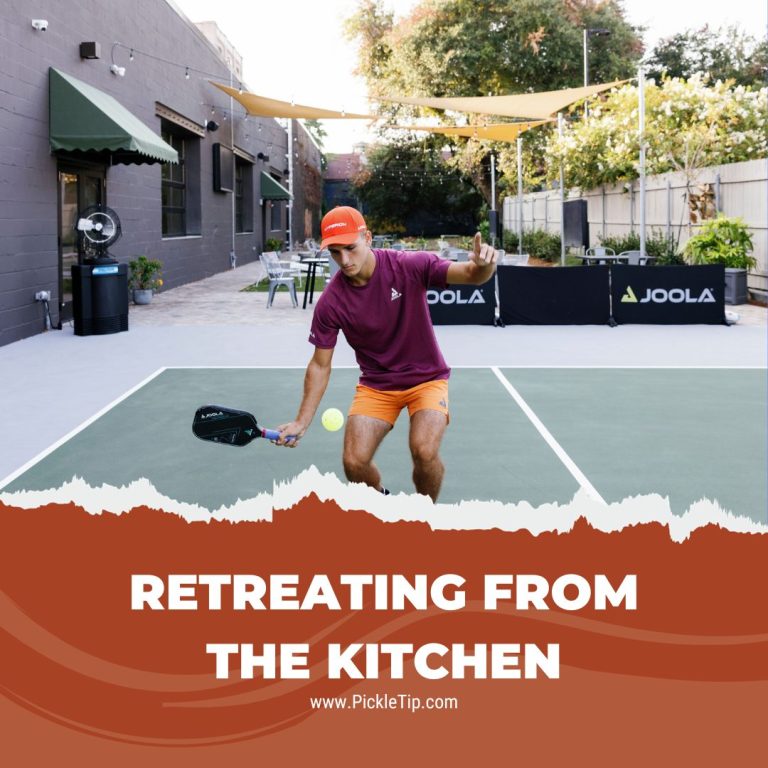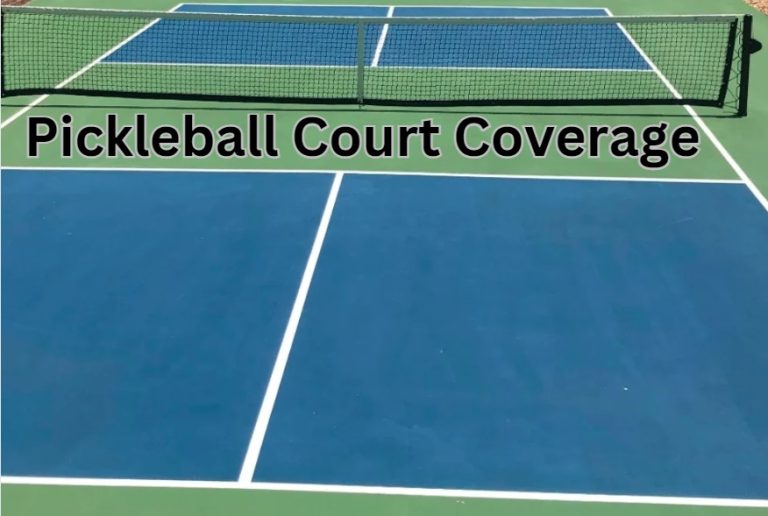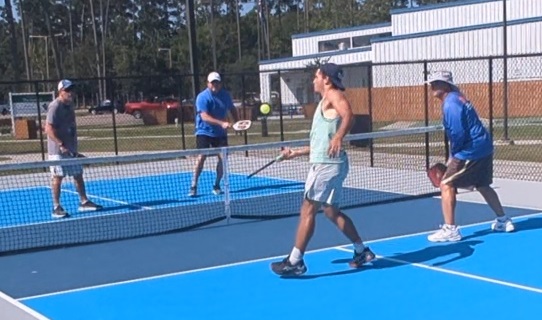Lob or Drop in Pickleball?
Lob or Drop in Pickleball: An Essential Guide
At the bustling Pontiff pickleball courts, amidst the sound of paddles striking balls and players calling scores, a heated debate caught my attention. Lob or Drop in Pickleball? Tristan and Jordan, partners practicing for an upcoming tournament, stood on opposite sides of a strategic divide: to incorporate the intentional use of lobs into their game plan or to rely on the precision of drop shots.
Tristan advocated for the lob, seeing it as a way to push their opponents back and create openings, while Jordan favored the drop shot for its subtlety and ability to draw opponents out of position. This spirited exchange not only highlighted the depth of strategy in pickleball but also sparked a curiosity in me.
Why choose one over the other, and under what circumstances? It led me to delve deeper into the mechanics, the strategy, and the situational effectiveness of the lob and drop shot in pickleball, culminating in this comprehensive guide.
Lob vs. Drop: The Strategic Duel
Imagine a chessboard, where each piece’s move is critical, dictating the flow and outcome of the game. In pickleball, the lob and the drop shot are akin to the queen and knight, each with its unique power and purpose. Lobs, like the queen, command the court with their soaring arcs, challenging opponents to retreat and defend their backcourt territory. Drops, on the other hand, mirror the knight’s cunning, with soft and precise placements that target the kitchen, drawing opponents forward into a tactical trap. This interplay of power and finesse adds a rich layer of strategy to pickleball, turning each match into a high-stakes game of physical chess where the next move could turn the tide of battle.
Lob: The Art of Elevation
Mastering the lob in pickleball is akin to conducting a symphony, where control, timing, and strategic foresight harmonize to produce a powerful effect. The lob’s essence lies in its height and trajectory, arching gracefully over opponents to land deep in the court. Achieving this requires a nuanced understanding of paddle angle—tilted slightly back to cradle the ball upwards—and the precise amount of force needed, neither too gentle to fall short nor too vigorous to sail beyond bounds. The grip, typically a continental or slightly modified version, allows for the flexibility and wrist snap necessary to propel the ball on its lofty path.
Identifying the opportune moment to unleash a lob is a craft in itself, necessitating keen observation of your opponents’ position and body language. When opponents inch closer to the net, muscles tensing for a volley, their forward momentum and narrowed focus on the net create the perfect scenario for a lob. It’s in these moments, as they stand poised to strike, that a well-executed lob can outmaneuver them, sending them scrambling backwards, often too late to mount an effective defense. Thus, the lob is not just a shot but a strategic ploy, a testament to a player’s ability to outthink and outmaneuver their opponents from afar.
Drop: Precision Meets Strategy
The drop shot in pickleball is a masterpiece of control, akin to a painter’s delicate stroke. It demands finesse and precision, crafted with a soft touch that belies its strategic depth. The ideal height barely clears the net, with a trajectory that whispers over it, ensuring the ball lands softly in the opponent’s kitchen. Paddle angle is critical, slightly open to cushion the ball and direct it just over the net. A light force is applied, just enough to send the ball on its intended path, not an inch more.
The grip, often a continental or a slight variation, offers the stability needed for this precise maneuver. Identifying the moment for a drop shot hinges on reading the game like a book. Watch for opponents anchored at the baseline or those momentarily off-balance while in transition. Their position, coupled with a focused gaze away from the net, signals the time to strike. The drop shot, therefore, is not merely a technique but a strategic chess move, drawing opponents into vulnerability with the promise of an easy ball, only to find themselves outplayed.
When to Lob or Drop in Pickleball
Choosing between a lob or a drop is a pivotal decision in pickleball. It hinges on multiple factors: your position, your opponents’ stance, and the game’s pace. Each shot has its moment where it shines brightest. A lob works best when opponents crowd the net, eagerly anticipating a volley. It sends them retreating, disrupting their aggressive posture. On the other hand, a drop is ideal when opponents hang back, ready for a power shot. It lures them forward, often into an awkward scramble.
The right decision can shift the game’s momentum in your favor. It requires not just practice, but also a keen understanding of the game’s dynamics. Observing your opponents’ movements and predicting their next steps are crucial. The choice between lobbing and dropping is more than just a tactical decision; it’s a psychological game. Making the right call at the right moment can demoralize opponents and boost your control over the match. Therefore, mastering when to lob or drop is essential for turning the tide of the game and securing victory.
Decoding the Lob
The lob is a strategic masterpiece against net players, acting as a surprise maneuver. It creates space, leveraging opponents’ forward positioning to your advantage. Perfectly timed, it turns defense into offense, shifting the momentum. As opponents rush towards the net, a well-placed lob sends them retreating. This sudden change from an aggressive to a defensive stance can disrupt their rhythm. The lob forces opponents to adapt quickly, often leading to errors or weak returns. By mastering the lob, you not only exploit positioning but also mentally unsettle your opponents. It’s a tactic that demands respect on the court, showcasing your strategic depth and versatility.
Mastering the Drop
Drop shots are the perfect counter to power players, also known as bangers. These shots strip control from those relying on brute force. By placing the ball softly into the kitchen, you force bangers to switch from power to precision, a transition that’s often uncomfortable. Timing and placement turn each drop into a strategic play, requiring opponents to approach the net under less favorable conditions. This shift can lead to unforced errors or weaker returns, giving you the advantage.
To refine your drop shot, consider these drills:
- Drop from the Baseline: Practice hitting drops from the baseline to the kitchen, focusing on control and placement.
- Target Practice: Set up targets in the kitchen area. Aim for these spots to improve accuracy.
- Repetitive Drops: Continuously hit drop shots from different positions. This builds consistency and muscle memory.
- Partner Drills: Practice with a partner. Alternate between drops and drives to mimic game situations.
Through these drills, you’ll develop a feel for the drop shot, making it a powerful tool in your arsenal.
Executing the Perfect Lob or Drop
Execution of lobs and drops is pivotal in pickleball, each demanding specific skills for effectiveness. For lobs, depth and trajectory are crucial. Aiming just beyond your opponents’ reach, the lob should arc high, making retrieval a challenge. This requires a blend of power and finesse, ensuring the ball lands deep without exiting play.
For drops, the focus is on softness and precision. The drop should barely clear the net, landing softly in the kitchen to minimize opponents’ response options. Achieving this soft landing demands control over paddle angle and the slightest touch, often using a less forceful, more measured swing.
Understanding these mechanics involves:
- Paddle Position: For lobs, angle the paddle slightly upwards; for drops, keep it open and under the ball.
- Swing Path: Use a smooth, upward motion for lobs; a gentle, controlled swing for drops.
- Point of Contact: Hit lobs at a higher point to lift the ball; drops should be hit lower, close to net height.
- Footwork: Step into the lob for added power; for drops, a stable stance ensures precision.
Practice these elements to master the art of lobbing and dropping, enhancing your strategic options in the game.
Tips for Lobbing
Disguise and precision elevate the lob into a formidable strategy. Varying angles and keenly observing opponents enhance its surprise factor. Executing a lob when a dink or drop is anticipated can catch opponents off guard, disrupting their preparedness and positioning. This element of surprise shifts the dynamic, compelling them to quickly adapt from expecting a short game to covering the full court. To maximize this tactic:
- Maintain a Neutral Stance: Appear ready for a dink or drop to keep opponents guessing.
- Practice Disguise: Work on making your lob setup look identical to that of a drop shot.
- Monitor Opponent Positioning: Choose the lob when they’re close to the net, making retreat difficult.
- Vary Your Shots: Mixing in lobs with drops and drives keeps opponents unprepared and reactive.
These tips can make the lob an unexpected and effective tool in your pickleball arsenal.
Tips for Drop Shots
A soft touch and unpredictability make the drop shot a game-changer. Aim for consistency and assess your opponents to find the perfect moment for a drop.
Defending Against Lobs and Drops
Defense against lobs and drops is vital. Anticipate lobs with swift footwork; counter drops with agility and sharp observation. While anticipation helps, execution is paramount. Recognizing ‘tells’ in your opponent’s body language and paddle positioning can give you the upper hand. For lobs, look for a sudden shift in their stance or a tilting back of the paddle. Drops might be preceded by a softening of the grip or a subtle positioning closer to the net. To effectively defend:
- Practice Quick Transitions: Improve your ability to switch from an offensive to a defensive stance rapidly.
- Enhance Footwork: Work on drills that increase your speed and agility to reach effectively lobbed or dropped shots.
- Develop Paddle Readiness: Keep your paddle in a neutral, ready position to react quickly to any shot.
- Communicate in Doubles: Clearly call out shots with your partner to ensure seamless coverage of the court.
By focusing on these aspects, you can bolster your defenses against both lobs and drops, turning potential weaknesses into strengths.
Lob or Drop in Pickleball?
Whether to lob or drop in pickleball is not just a choice. It’s a strategic decision that can dictate the flow of the game and ultimately, the outcome. By understanding and mastering these shots, players can elevate their game and outsmart their opponents in this dynamic and challenging sport.







